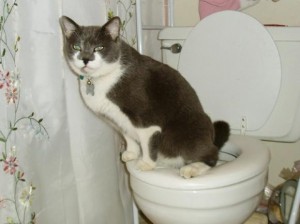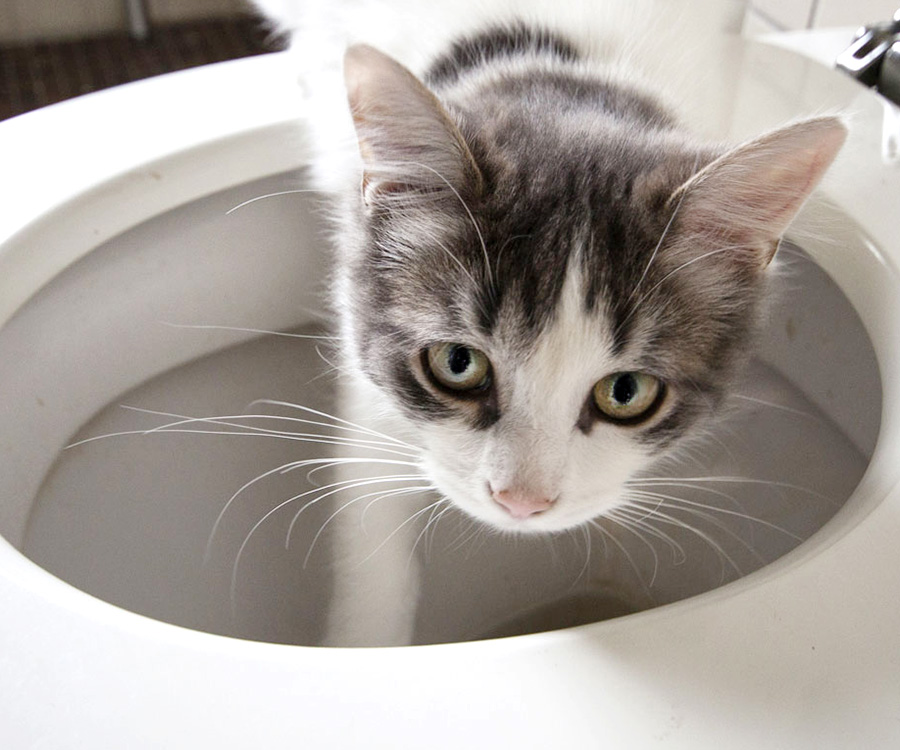The writer is making a few good points about Don’t flush cat feces down the toilet in general in this great article underneath.

Intro
As cat owners, it's necessary to bear in mind exactly how we take care of our feline buddies' waste. While it may seem convenient to flush cat poop down the toilet, this technique can have detrimental effects for both the setting and human wellness.
Alternatives to Flushing
Luckily, there are much safer and much more responsible means to throw away feline poop. Consider the complying with options:
1. Scoop and Dispose in Trash
One of the most usual approach of dealing with feline poop is to scoop it right into an eco-friendly bag and toss it in the garbage. Make certain to make use of a committed clutter inside story and dispose of the waste promptly.
2. Usage Biodegradable Litter
Opt for eco-friendly pet cat clutter made from products such as corn or wheat. These trashes are environmentally friendly and can be safely disposed of in the garbage.
3. Hide in the Yard
If you have a yard, consider hiding feline waste in a designated location away from vegetable yards and water sources. Be sure to dig deep sufficient to prevent contamination of groundwater.
4. Mount a Pet Waste Disposal System
Invest in a pet dog garbage disposal system particularly designed for feline waste. These systems utilize enzymes to break down the waste, minimizing smell and environmental influence.
Wellness Risks
In addition to ecological worries, purging feline waste can also posture health and wellness risks to human beings. Cat feces might consist of Toxoplasma gondii, a parasite that can trigger toxoplasmosis-- a potentially serious illness, specifically for pregnant ladies and people with weakened body immune systems.
Environmental Impact
Flushing pet cat poop presents damaging virus and parasites into the water, posing a considerable danger to marine ecological communities. These impurities can adversely influence aquatic life and compromise water high quality.
Conclusion
Responsible pet ownership expands past offering food and shelter-- it also entails correct waste administration. By refraining from flushing feline poop down the bathroom and choosing alternative disposal approaches, we can reduce our ecological impact and protect human wellness.
Why Can’t I Flush Cat Poop?
It Spreads a Parasite
Cats are frequently infected with a parasite called toxoplasma gondii. The parasite causes an infection called toxoplasmosis. It is usually harmless to cats. The parasite only uses cat poop as a host for its eggs. Otherwise, the cat’s immune system usually keeps the infection at low enough levels to maintain its own health. But it does not stop the develop of eggs. These eggs are tiny and surprisingly tough. They may survive for a year before they begin to grow. But that’s the problem.
Our wastewater system is not designed to deal with toxoplasmosis eggs. Instead, most eggs will flush from your toilet into sewers and wastewater management plants. After the sewage is treated for many other harmful things in it, it is typically released into local rivers, lakes, or oceans. Here, the toxoplasmosis eggs can find new hosts, including starfish, crabs, otters, and many other wildlife. For many, this is a significant risk to their health. Toxoplasmosis can also end up infecting water sources that are important for agriculture, which means our deer, pigs, and sheep can get infected too.
Is There Risk to Humans?
There can be a risk to human life from flushing cat poop down the toilet. If you do so, the parasites from your cat’s poop can end up in shellfish, game animals, or livestock. If this meat is then served raw or undercooked, the people who eat it can get sick.
In fact, according to the CDC, 40 million people in the United States are infected with toxoplasma gondii. They get it from exposure to infected seafood, or from some kind of cat poop contamination, like drinking from a stream that is contaminated or touching anything that has come into contact with cat poop. That includes just cleaning a cat litter box.
Most people who get infected with these parasites will not develop any symptoms. However, for pregnant women or for those with compromised immune systems, the parasite can cause severe health problems.
How to Handle Cat Poop
The best way to handle cat poop is actually to clean the box more often. The eggs that the parasite sheds will not become active until one to five days after the cat poops. That means that if you clean daily, you’re much less likely to come into direct contact with infectious eggs.
That said, always dispose of cat poop in the garbage and not down the toilet. Wash your hands before and after you clean the litter box, and bring the bag of poop right outside to your garbage bins.
https://trenchlesssolutionsusa.com/why-cant-i-flush-cat-poop/

I recently found that content about Can You Flush Cat Poop Down The Toilet? when exploring the search engines. Sharing is good. Helping people is fun. Thanks so much for your time invested reading it.
Book Now!
Comments on “The Risks of Flushing Cat Poop in Your Toilet - Precautionary Measures”